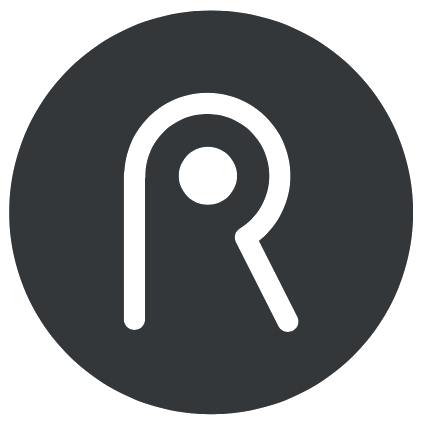Industrial pumps are critical components of many industrial processes, such as oil and gas, chemical production, and water treatment.
The failure of a pump can lead to significant production downtime and financial losses. Therefore, it is essential to detect faults and implement preventive maintenance strategies to reduce the risk of pump failures.
In this article, we'll discuss how to detect faults in industrial pumps and implement predictive maintenance.
Detecting faults in industrial pumps
Detecting faults in industrial pumps involves monitoring various factors such as vibration, temperature, pressure, and flow rate. These factors are indicators of a pump's health and can help identify any issues before they cause a significant failure.
One of the most common methods of detecting pump faults is through vibration analysis. Vibration analysis involves measuring the vibration levels of a pump and analyzing the data to identify any abnormalities, such as an increase or change in frequency. By monitoring vibration levels, operators can detect faults in a pump early, before they lead to a catastrophic failure.
Another method of detecting faults is through temperature analysis. Overheating is a common issue in industrial pumps and can be caused by various factors such as a lack of lubrication, high ambient temperatures, or excessive pressure. By monitoring the temperature of a pump and comparing it to its normal operating temperature, operators can identify any abnormal temperature increases.
Pressure and flow rate monitoring can also be used to detect faults in industrial pumps. A drop in pressure or flow rate may indicate a blockage or a leak in the pump's system.
By monitoring these factors, operators can detect any issues and take corrective action before they cause significant damage.
Implementing industrial pump predictive maintenance
Predictive maintenance involves monitoring a pump's health in real-time and predicting when maintenance is needed to avoid unexpected failures. This approach to maintenance can help reduce downtime, increase productivity, and extend the life of a pump.
Implementing predictive maintenance requires novel technologies such as IoT, machine learning, and AI:
- IoT devices, sensors or connected machinery can be used to monitor various factors such as vibration, temperature, pressure, and flow rate. The data collected from these sensors (as well as other related business systems, assets and third-party data sources) is transmitted to a central IoT platform, such as Rayven Dynamix, where it can be analyzed and used to predict when maintenance is needed.
- Machine learning algorithms can be used to analyze the data collected within IoT platforms and predict when a pump is likely to fail through the use of specialist algorithms that can identify patterns and anomalies in the data. By using these algorithms, operators can predict when maintenance is needed and schedule it before failure.
- AI can also be used to optimize maintenance schedules, improve asset performance and efficiency, as well as reduce the risk of hazardous, unexpected failures. They do this by leveraging machine learning algorithms to analyze historical data on pump failures, maintenance schedules, and other factors; identifying patterns and developing optimized maintenance schedules, as well as intervening (via control systems and automation) to adjust setting for optimal performance or shutting down wider processed to prevent catastrophic equipment failures. By using AI, operators can reduce downtime, increase productivity, and extend the lifespan of a pump.
Challenges and considerations when implement industrial pump predictive maintenance
Implementing predictive maintenance for industrial pumps can be challenging, and there are several factors to consider when developing a predictive maintenance strategy.
One of the key challenges is collecting and managing the vast amounts of data generated and that needs to be collected from multiple, dispersed IT and operational technologies. To be successful, operators must have a reliable and secure system in place to collect, store, and analyze the data, so that they can trust what they are seeing.
Another challenge is developing accurate predictive models. Machine learning algorithms must be trained on accurate and representative data to develop reliable predictive models.
Businesses must also consider the cost of implementing predictive maintenance. IoT sensors, data storage, and machine learning algorithms can be expensive, and operators must consider the return on investment when developing a predictive maintenance strategy. It's notable that significant cost and time savings can be made by adopting prebuilt industrial pump IoT solutions, such as Rayven's range of solutions.
Conclusion
Predictive maintenance is likely to become a critical aspect of industrial pump management for most businesses in the future.
Detecting faults and implementing predictive maintenance for industrial pumps can help reduce downtime, increase productivity, and extend the life of a pump. By using advanced technologies such as IoT, machine learning, and AI; operators can monitor a pump's health in real-time and predict when maintenance is needed.
Businesses must, however, be aware of the challenges and costs associated with implementing predictive maintenance and plan accordingly. With careful planning and investment, predictive maintenance can be a valuable tool for industrial plant management and help ensure the reliable operation of industrial pumps.
Rayven offers a range of fast-to-deploy and affordable range of prebuilt industrial pump IoT and Industry 4.0 solutions - built on our world leading, integrated data, AI + IoT platform, Dynamix - and how they can enable your business to improve performance, reduce energy consumption, and predict future needs, simply. Speak to us today.
Author
